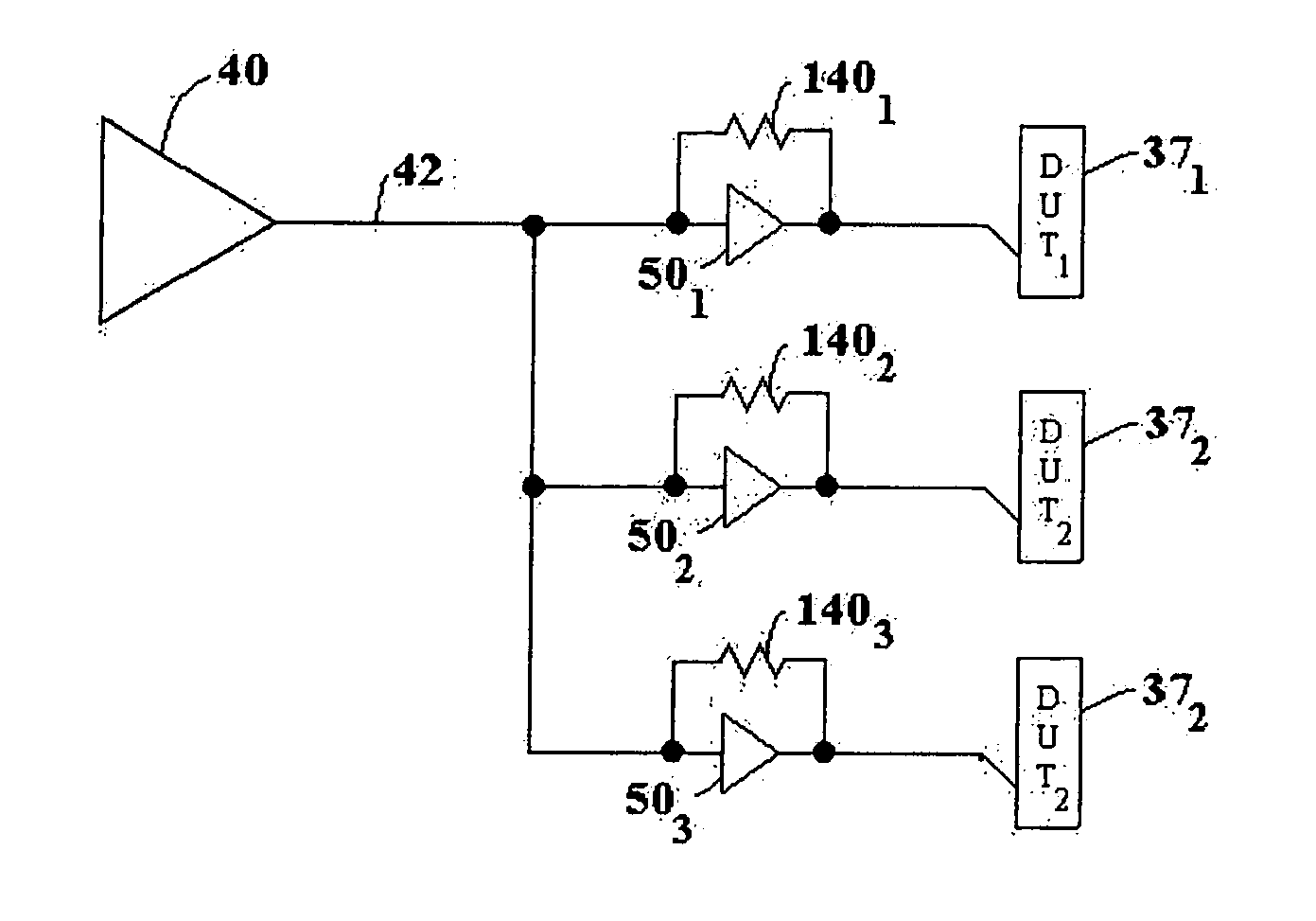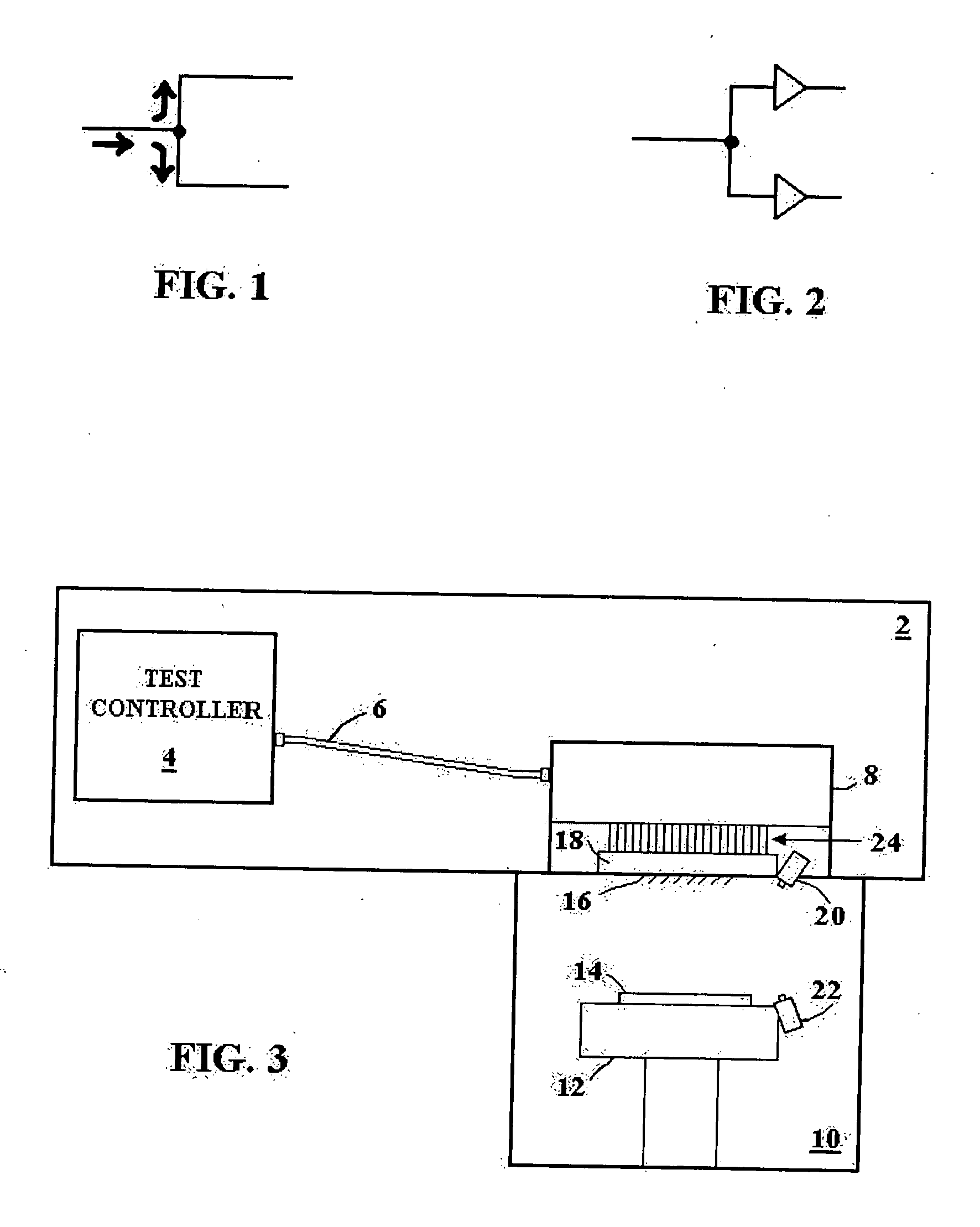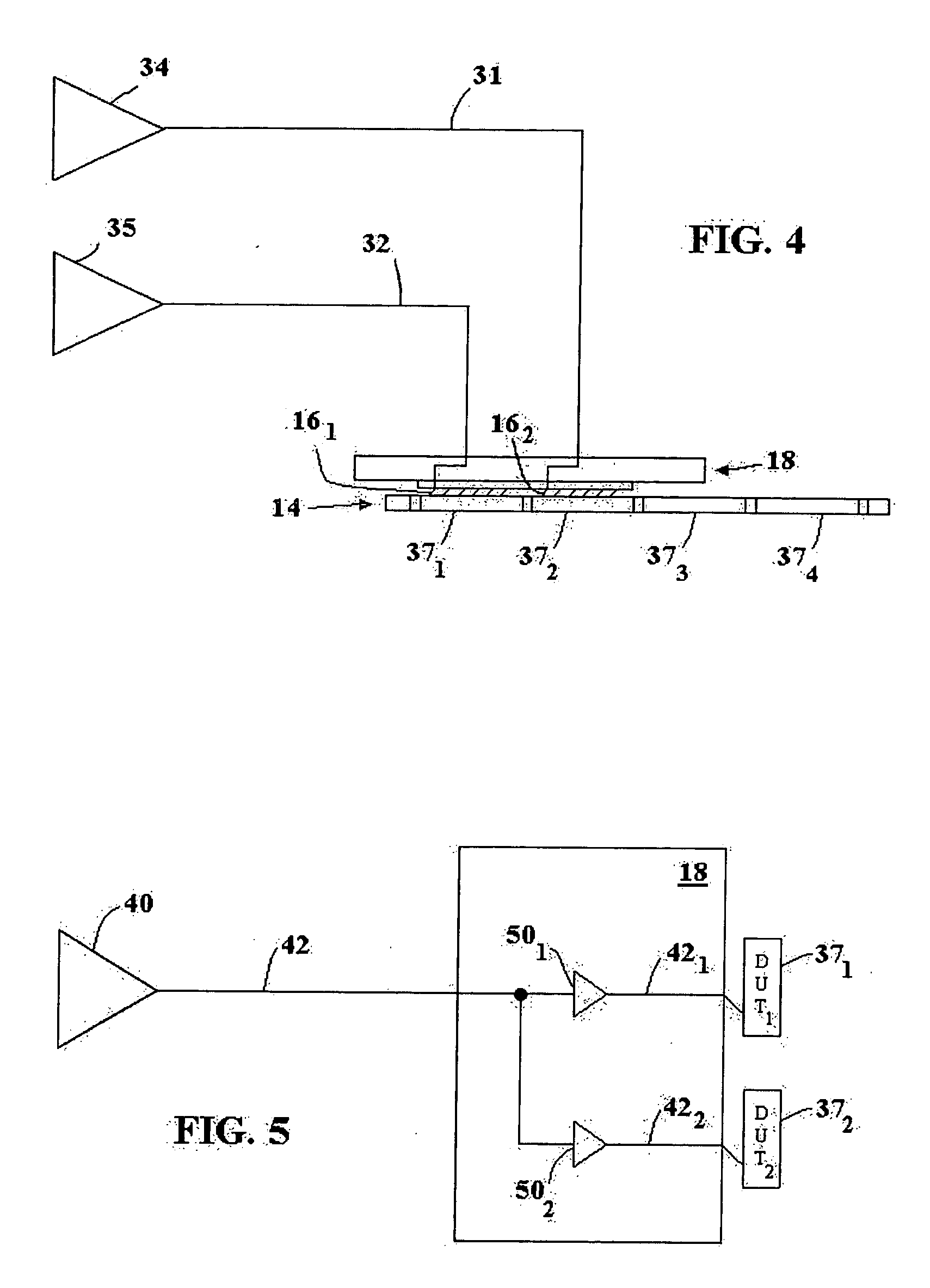Method and apparatus for remotely buffering test channels
- Summary
- Abstract
- Description
- Claims
- Application Information
AI Technical Summary
Benefits of technology
Problems solved by technology
Method used
Image
Examples
Embodiment Construction
[0041]FIG. 6 shows an embodiment of the isolation buffer 50 with delay control which can change the bias voltage supplied to the buffer 50. In FIG. 6, the buffer 50 includes an inverter 51 having a signal input 55 and output 56. The system power supply voltage rails 57 and 58 carry a high voltage V+ and a low voltage V−. With CMOS devices, the bias or power supply voltages are typically referred to as Vdd and Vss. Typically, the rail voltages V+ and V− are supplied directly to the buffer. The voltage V+, for example, may be 5 volts, while V− may be ground or zero volts. However, in FIG. 6 with the delay control circuit set to control delay by varying power supply voltage, the voltage rails V+ and V− are provided through respective delay control circuits 60 and 61 as the high and low power supply voltages to inverter 51. Although shown as two separate delay control circuits 60 and 61 in FIGS. 5 and 6, a single combined circuit can be used. Further, although two circuits 60 and 61 are...
PUM
 Login to View More
Login to View More Abstract
Description
Claims
Application Information
 Login to View More
Login to View More - R&D
- Intellectual Property
- Life Sciences
- Materials
- Tech Scout
- Unparalleled Data Quality
- Higher Quality Content
- 60% Fewer Hallucinations
Browse by: Latest US Patents, China's latest patents, Technical Efficacy Thesaurus, Application Domain, Technology Topic, Popular Technical Reports.
© 2025 PatSnap. All rights reserved.Legal|Privacy policy|Modern Slavery Act Transparency Statement|Sitemap|About US| Contact US: help@patsnap.com



